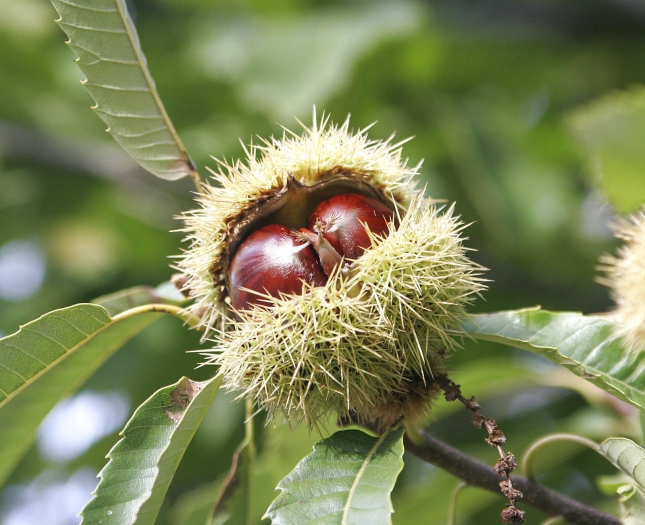Sweet Chestnut
(Castanea sativa)
Sweet Chestnut (Castanea sativa)
/
/

Fir0002
GFDL 1.2




















































Estimated Native Range
Summary
The Sweet Chestnut thrives on acidic, deeply weathered, limestone-free soils with a pH between 4.5 and 6, and it cannot withstand soil compaction or clay-rich, waterlogged conditions. It is a heat-loving species requiring a long growing season, with optimal average temperatures between 8 °C and 15 °C. The tree is sensitive to low autumn temperatures which can damage the fruit, but it can survive winter lows down to -15 °C. The tree prefers climates similar to those suitable for viticulture, with annual precipitation between 400 and 1600 mm. Stratification of seeds at 2-3 °C is necessary before planting, and young trees are transplanted after a year. Sweet Chestnut produces showy yellow, green, and white flowers in the summer. It is best cultivated in full sun with medium water requirements and adaptable to various drainage conditions. Castanea sativa can become invasive outside its native range, so it is important to check local guidelines before planting.CC BY-SA 4.0
Plant Description
- Plant Type: Tree
- Height: 80-100 feet
- Width: 30-50 feet
- Growth Rate: Moderate
- Flower Color: Yellow
- Flowering Season: Summer
- Leaf Retention: Deciduous
Growth Requirements
- Sun: Full Sun
- Water: Medium
- Drainage: Slow, Medium, Fast
Common Uses
Bee Garden, Bird Garden, Butterfly Garden, Deer Resistant, Drought Tolerant, Edible*Disclaimer: Easyscape's listed plant edibility is for informational use. Always verify the safety and proper identification of any plant before consumption., Fragrant
Natural Habitat
native to the deciduous forests of the Balkan Peninsula and Northern Iran
Other Names
Common Names: Spanish Chestnut, European Chestnut, Edel-Kastanie, Eß-Kastanie, Edelkastanie, Châtaignier, Tamme Kastanje, Kastanj, Äkta Kastanj, Ätlig Kastanj
Scientific Names: , Castanea sativa, Castanea vulgaris, Castanea vesca, Castanea sativa var. asplenifolia, Castanea sativa f. variegata, Fagus castanea, Castanea sativa f. prolifera, Castanea sativa var. microcarpa, Castanea castanea
GBIF Accepted Name: Castanea sativa Mill.